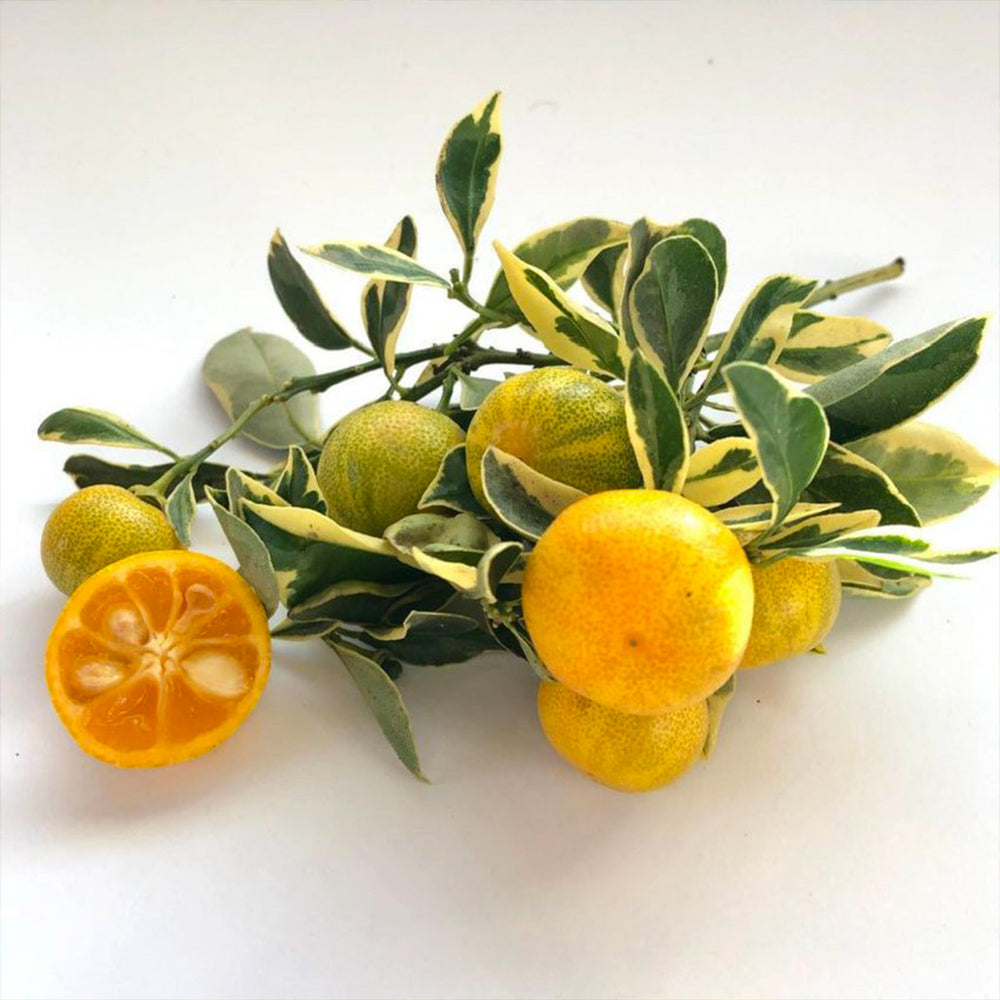* Images shown are of mature plants

Have questions? Talk with our Plant Experts (800) 973-8959
Save 25% on $200+ with code FALL25.
Questions? Call our plant experts: (800) 973-8959
Sweet Citrus Similar to Lemons and Limes on Cold-Hardy Tree
The Variegated Calamondin Tree is a delicious citrus variety that you'll want to try for yourself! It has green and yellow-striped fruit with a sweet, tart center reminiscent of a sour Mandarin orange.
This tree is a hardy and attractive option with delicious fruit that you can use for homemade juices, marmalades, and so much more. It's even compact enough to fit in your garden, containers, or sunroom for fresh fruit anytime.
Plus, this self-fertile plant gives you bounties of crops during the harvest season for a small but mighty fruit that's full of zesty flavors. You can use this fruit in place of lemons or limes, and it makes an attractive citrus plant to elevate your yard with some color and fragrance.
This cold-hardy variety is a must for creating your own grove in your backyard. Buy the Variegated Calamondin Tree today!
Pollination Info
Variegated Calamondin Tree Pollination
Variegated Calamondin Trees are self-fertile. You will get fruit with only one plant. However, adding an additional Variegated Calamondin Tree will drastically increase the size of your crop.
Planting & Care
1. Planting: Choose a sunny spot for container planting and a well-drained area for ground planting. Use a 10-14" starter pot with excellent drainage for containers. Prepare loose soil for ground planting. Ensure the area is three times the pot diameter and dug as deep as possible. When planting, dig a hole twice as wide and just as deep as the rootball. Fill up with soil to the crown of the roots, avoiding burying the tree. Water deeply after planting.
2. Watering: Keep the top of the soil dry between waterings. Citrus trees prefer infrequent but deep watering. Create a watering basin around the drip line of the tree and expand it as the tree grows. Water deeply once a week for in-ground or container plantings.
3. Fertilizing: When fertilizing, apply balanced fertilizer monthly in spring, summer, and early fall.
4. Pruning: In early spring, prune the tree to maintain its shape and remove dead or diseased branches. A semi-dwarf citrus tree can grow 10-15 feet in the ground but can be kept smaller with judicious pruning. Identify the graft union, typically seen as a diagonal scar between 4 and 8 inches from the soil, and remove all shoot growth below it, known as "suckers," to ensure the top of the tree stays healthy.
5. Pollination: This plant is self-fertile, so you will get fruit from just one tree.
Shipping Details
Estimated Shipping Time: Most orders ship immediately. As noted on the website, some items are seasonal, and may only ship in spring or fall. Once your order is shipped, you'll receive an email with a tracking number.
| Amount of Order | Shipping Charge |
|---|---|
| Less than $49 | $19.95 |
| $49 + | FREE SHIPPING! |
Product Details
| Mature Height: | 4-6 ft. |
| Mature Width: | 3-5 ft. |
| Sunlight: | Full Sun |
| Blooms: | Spring |
| Growth Rate: | Slow Growing |
| Harvest Time: | Fall |
| Botanical Name: | Varigeta Citrus x citrofortunella mitis |
| Does Not Ship To: | AK, AL, AZ, CA, FL, HI, LA, MS, OR, TX |
| Grows Well In Zones: | 7-10 patio / 9-11 outdoors |
| Your Growing Zone: | # |


